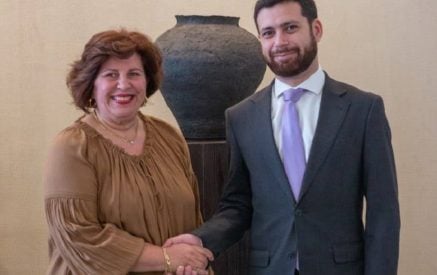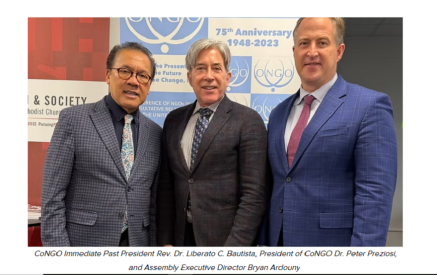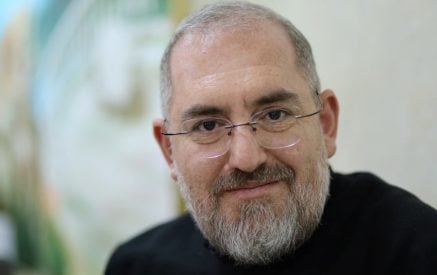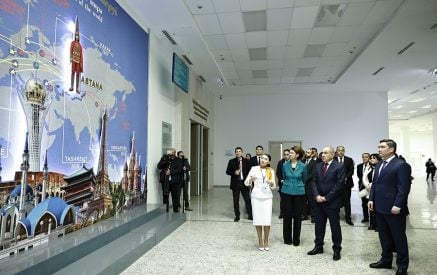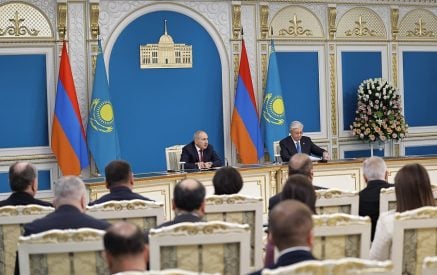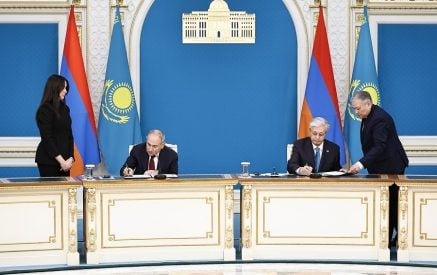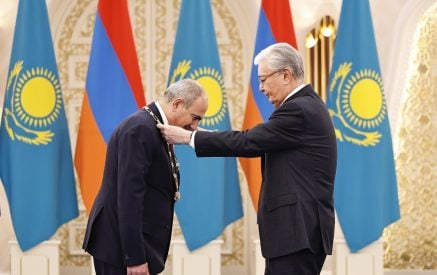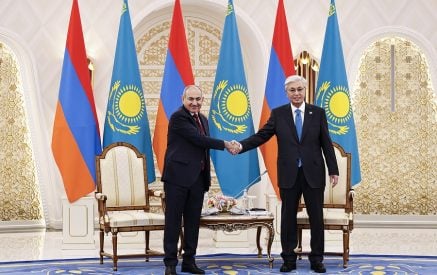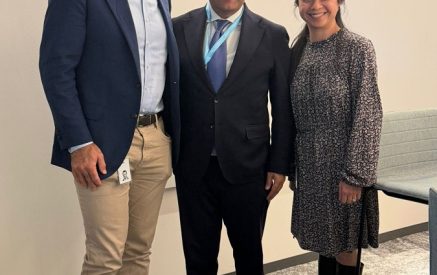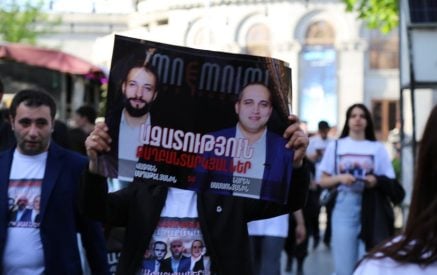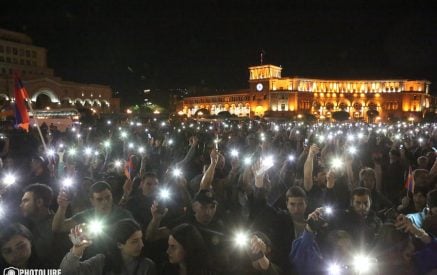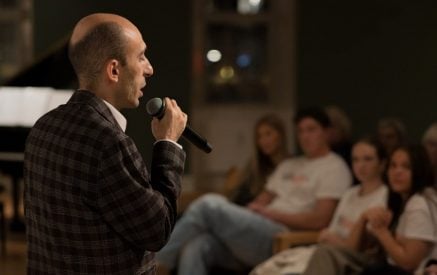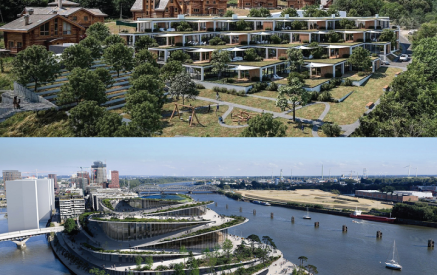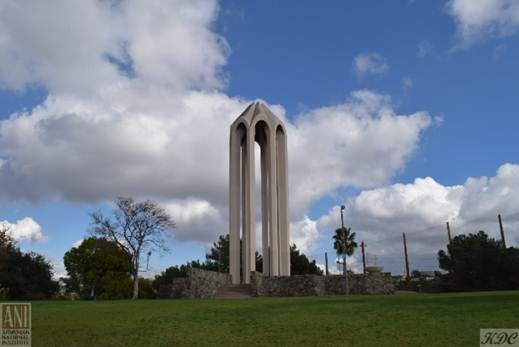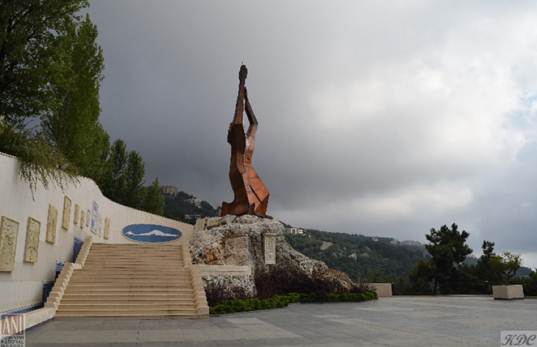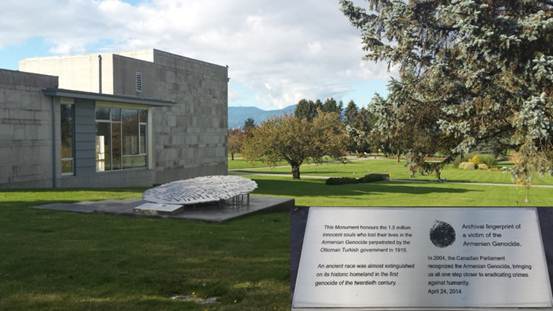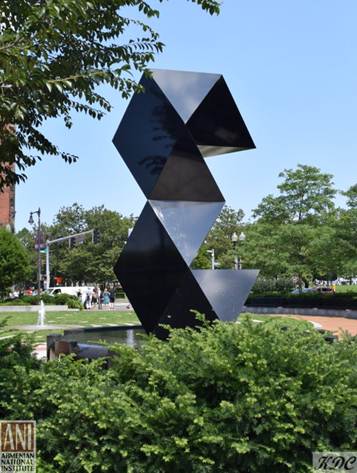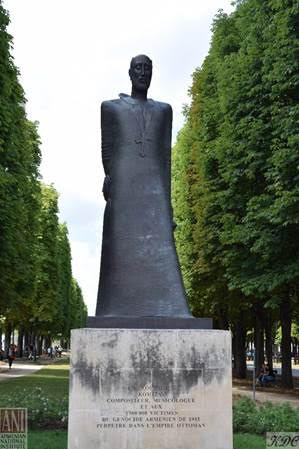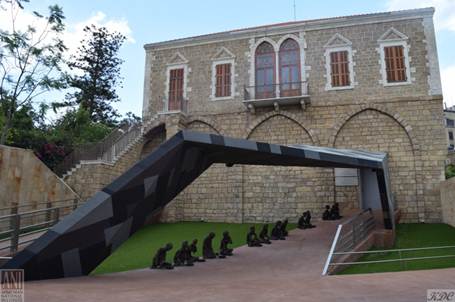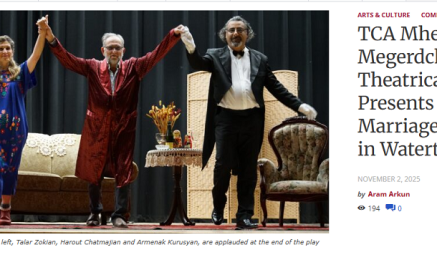Washington, D.C. – After extensive research and the gift of a major cache of photographs of Armenian Genocide memorials from around the world, the Armenian National Institute (ANI) website presently displays 327 memorials in 45 countries.
The 2015 centennial commemorations of the Armenian Genocide presented a somber occasion for many communities to install new memorials. The database previously accounted for 200 memorials in 32 countries. The new figures represent a 60% growth in the number of memorials in an additional 13 countries around the world. Also, 74 existing postings have been updated with new information. All these can be viewed in close detail with the 650 images that have been added to the existing database.
The database provides information about each memorial, a description of the type, its location, the year of installation, a transcription of important inscriptions, and additional details if available, such as the artist, sculptor, or architect, sponsors, official visitors, and amenities. The database also has a search function according to the type of memorial or the city in which a memorial is located.
Read also
Memorials are documented in as diverse a set of countries as Brazil and Bulgaria, Chile and Cyprus, Estonia and Ethiopia, Ireland and Italy, Singapore and Slovakia, and Ukraine and Uruguay. To the same extent that Armenian churches indicate the existence of diaspora communities, the Armenian Genocide memorials now also mark their location and attest to the depth of the Armenian people’s commitment to honoring the memory of the victims of the 1915 atrocities.
The full list of countries on the ANI site includes: Argentina (7); Armenia (44); Australia (7); Austria (4); Belgium (2); Brazil (3); Bulgaria (6); Canada (9); Chile (2); Cyprus (4); Czechia (1); Denmark (1); Egypt (3); Estonia (1); Ethiopia (1); France (45); Georgia (3); Germany (14); Greece (2); Hungary (3); India (1); Iran (8); Ireland (1); Israel (3); Italy (8); Latvia (1); Lebanon (14); Mexico (1); Nagorno-Karabakh (Artsakh) (3); Netherlands (2); Poland (2); Romania (2); Russia (10); Singapore (1); Slovakia (2); Spain (4); Sweden (2); Switzerland (3); Syria (7); Ukraine (5); United Arab Emirates (1); United Kingdom (4); United States (74); Uruguay (4); Venezuela (1).
Besides Armenia, where 44 memorials have been documented, 29 of which were recently added to the database, countries with a large number of memorials include France, with 45 documented sites, of which 29 were added, Germany with 14, most of which are recent installations, Lebanon with 14, some consisting of significant complexes, and the United States with 74 identified memorials, 25 of which were added.
Many of the memorials are monuments and the khachkar, the cross-stone in traditional Armenian design, and in varying sizes, has been adopted as a commonly-shared feature. This appears to be a more recent development in the installation trend, perhaps reflecting the origin of the community sponsoring the memorial, and its preference to rely upon an art form that references traditional Armenian memorial art.
Other sites have installed sculptures ranging from conventional figural representations all the way to completely abstract forms striving to capture the depth of the pain associated with the genocide experience. On the one hand, the figure of Komitas has become a symbol of the victim, with a noteworthy example in the middle of Paris, France, and another in Detroit, Michigan. On the other hand, there is a detectable change in styles where monuments raised in Armenia in the Soviet period usually resorted to abstraction with minimal direct reference to the Armenian Genocide, and where now memorials take more diverse forms since independence.
Whereas the well-known central memorial in Yerevan at the Tsitsernakaberd complex is the largest of its type, several other memorials in Armenia also involve substantial complexes, especially the Musa Dagh Memorial, located in Armavir, and the memorial in Nor Hadjin in Kotayk. Smaller-scale models resembling the Tsitsernakaberd memorial have been constructed in a number of locations, including a respectable replica in Fresno, California.
Notably impressive memorial complexes have also been created in Lebanon and in the United States. The very large monument in Montebello, California, in the shape of an extended Armenian church cupola, dates from the semi-centennial commemorative activities of 1965. Also located in a public area is the Armenian Heritage Park in central Boston, Massachusetts, with its innovative sculptural installation that is adjustable and sits in a round pool across from a circular labyrinth. On the Mission Hills campus of the Ararat Home, the Los Angeles Armenian community’s retirement facility for the aged, a number of memorials dedicated to specific purposes have emerged as another complex of notable monuments, including a memorial garden dedicated to Aurora Mardiganian, whose story has been recovered as the emblematic experience of the survivor. As for the campus of the seminary of the Armenian Catholicosate of Cilicia located in the town of Bikfaya in the Lebanon mountains, an entire series of monuments recall important aspects of Armenian history at the foot of its colossal bronze statue.
The memorial chapel on the grounds of the Catholicosate in Antelias, Lebanon, which serves as an ossuary, has also become another model, and other similar memorial chapels have been constructed elsewhere. The most elaborate of these constitute the chapel in the town of Der Zor in Syria, the site of the largest death camp during the Armenian Genocide.
The Der Zor complex was subjected to extensive damage and rendered to ruin at the hands of Islamic State terrorists who overran eastern Syria in 2014. The ISIS militants, who committed genocide against the Yazidi people of northern Iraq and persecuted the local Kurdish populations, were very likely to have inflicted damage to the memorial in service to their sponsors in Turkey.
In 1995, the Tsitsernakaberd memorial site was expanded with the construction of the first museum dedicated to the Armenian Genocide. The museum and associated research institute (AGMI) were once again sizably expanded for the 2015 centennial events. AGMI is now joined by other institutions providing physical exhibits such as the Armenian Museum of America in Watertown, Massachusetts, and the recently opened Armenian Museum in Moscow. Online exhibits and museums include Houshamadyan, which is dedicated to recovering and reconstructing the memory of Armenian life in the pre-genocide era, Land and Culture, which hosts a database of monuments destroyed or confiscated during the Armenian Genocide, and the Armenian Genocide Museum of America’s interactive website. ANI also notes Research on Armenian Architecture, which is dedicated to the photographic recovery of Armenia’s heritage subjected to destruction.
With the exception of many memorial sites in Syria, which have become difficult to access under conditions of civil strife in the country, very few memorials are actually placed at locations directly associated with the Armenian Genocide. There are none to speak of in Turkey, of course, where so many atrocities were committed all across Armenia and Anatolia, even though the first memorial service on April 24, 1919, was held in Istanbul. The only memorials in that part of the world are the unmarked and crumbling remains of ancient churches and abandoned homes.
A unique museum exists at an actual orphanage site in the town of Jbeil (also known as Byblos) in Lebanon. The orphanage structure is still intact and has been converted into the Armenian Genocide Orphans Museum that contains moving exhibits on the experience of child survivors who were housed in the facility. The plaza facing the building has also been converted into a memorial complex dedicated to the orphans, with a monument to the guiding light of the institution, Maria Jacobsen. Another orphanage building still intact is located in the small Swiss town of Begnins. It is marked by two modest plaques dedicated by the offspring of Armenian orphans who were housed and educated in that facility, and in recognition of the Swiss pastor Antony Krafft-Bonnard, who established the orphanage.
Other humanitarians have been extended recognition through plaques and monuments dedicated in their memory. The Wall of Honor at the Tsiternakaberd Memorial recalls the most prominent, including Alma Johansson, Anatole France, Armin T. Wegner, Karen Jeppe, Henry Morgenthau Sr., Jakob Künzler, Johannes Lepsius, Pierre Quillard, James Bryce, Raphael Lemkin, Franz Werfel, and Fridtjof Nansen. Others are recognized with busts or memorials placed in their respective countries, including Franz Werfel in Austria, Karen Jeppe in Denmark, Anna Hedvig Büll in Estonia, and Johannes Lepsius in Germany.
The Armenian Genocide Memorials Database was first created as part of a memorials database project funded by the Rockefeller Foundation, with assistance from the United States Holocaust Memorial Museum. Robert Arzoumanian, Assistant to the ANI Director, conducted further research under the guidance of ANI Director Dr. Rouben Adalian to bring the database up-to-date to reflect and record the considerable efforts made by Armenian communities worldwide to honor the centennial of the Armenian Genocide by installing new memorials. These sites serve as gathering places for the annual commemorations that are held every year on the 24th of April, and have become tributes to the survivors who founded the communities of the Armenian Diaspora.
ANI extends its appreciation to its friends who have supported this ongoing effort to document Armenian Genocide memorials. ANI also acknowledges the public’s input for the background information on many of the identified monuments. ANI continues to welcome public assistance with this undertaking, especially with any help it can receive concerning undocumented memorials, or the current condition of existing memorials.
For more information on ANI, please refer to the preceding announcements of March 21, 2022, “Armenian National Institute Website Now Includes 795 Official Records Affirming Armenian Genocide,” and March 28, 2022, “Armenian National Institute Posts Database on Media Coverage of President Biden’s Recognition of the Armenian Genocide and its Implications.”
Founded in 1997, the Armenian National Institute (ANI) is a 501(c)(3) educational charity based in Washington, D.C., and is dedicated to the study, research, and affirmation of the Armenian Genocide. The ANI website can be consulted in English, Turkish, Spanish, and Arabic. ANI also maintains the online Armenian Genocide Museum of America (AGMA).





